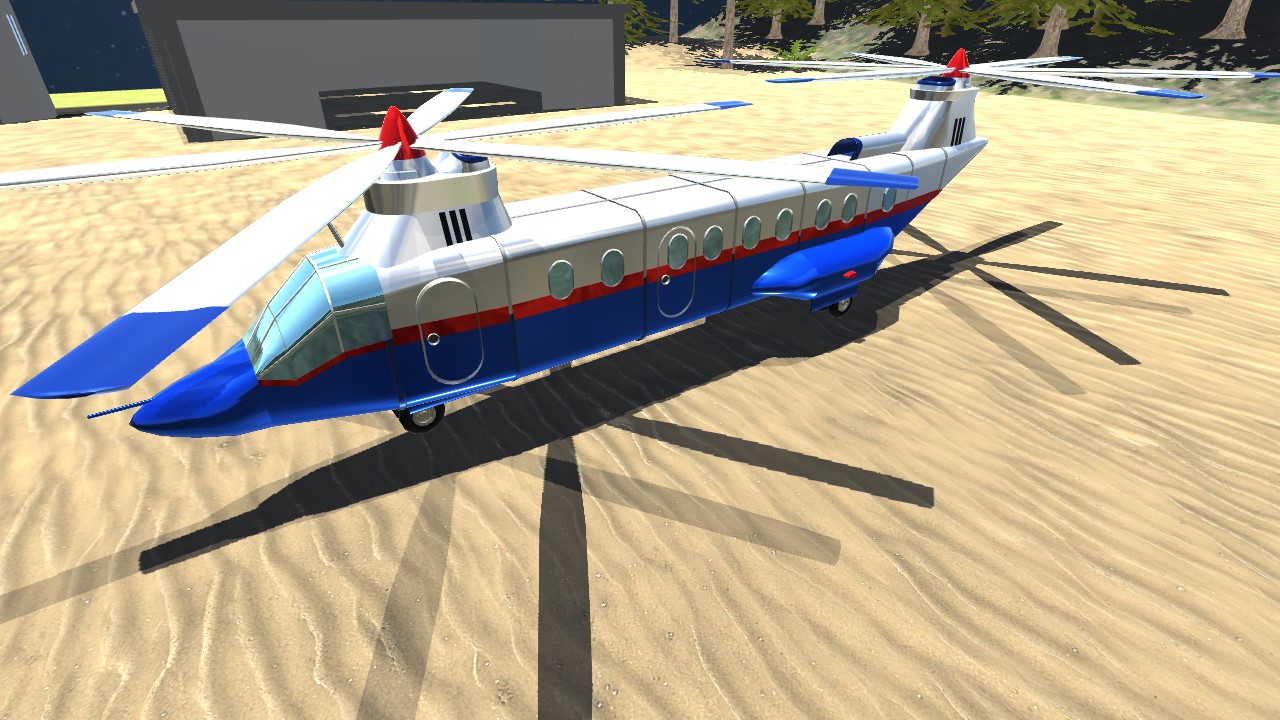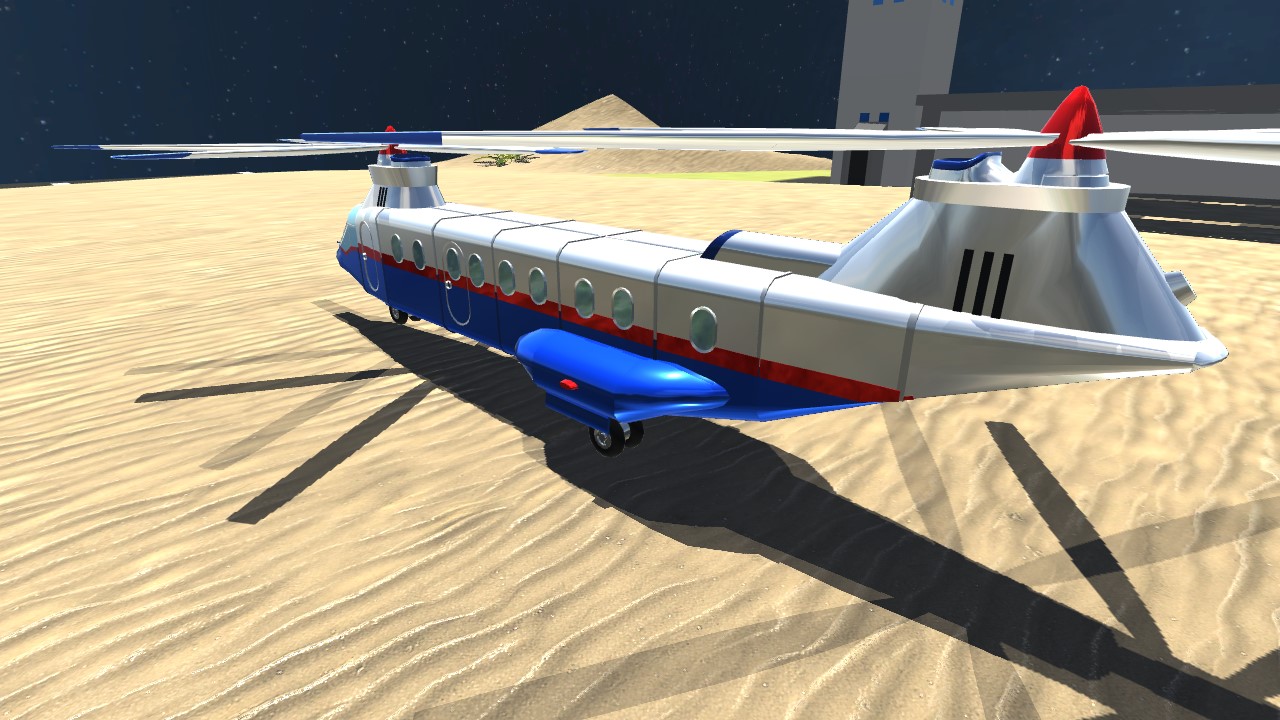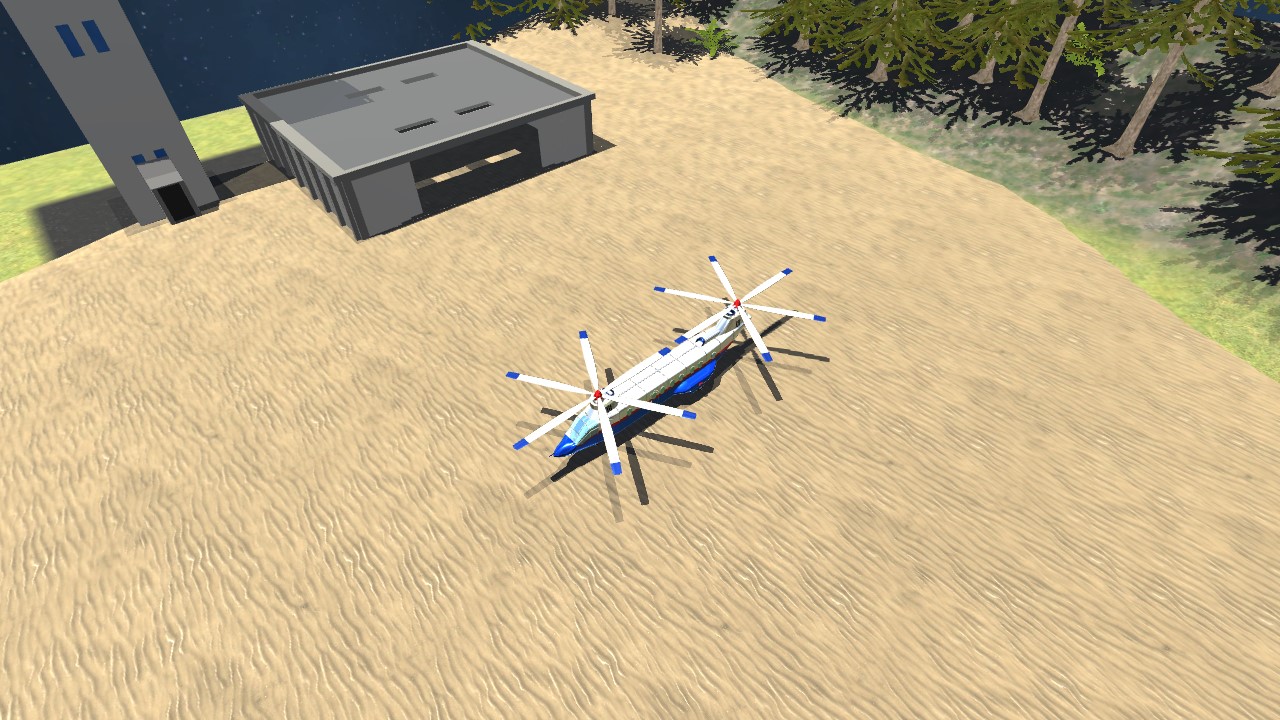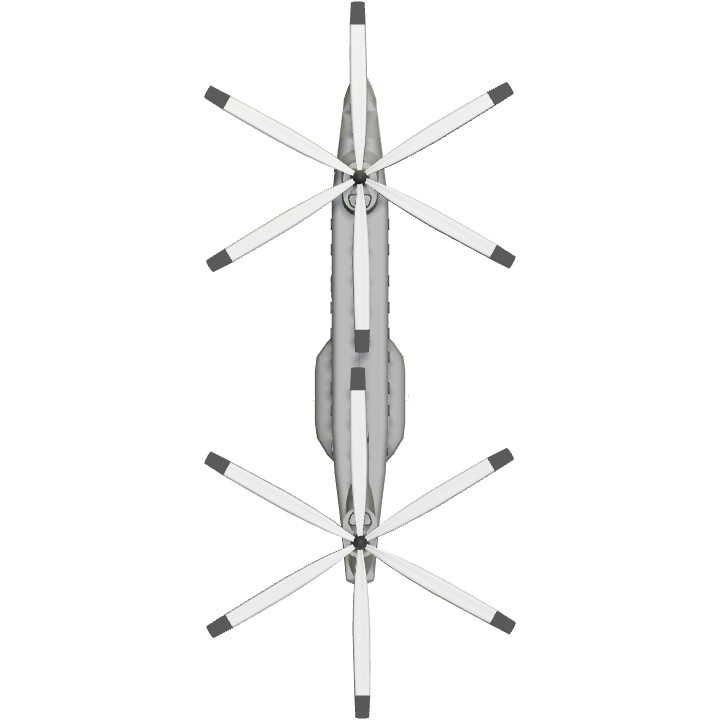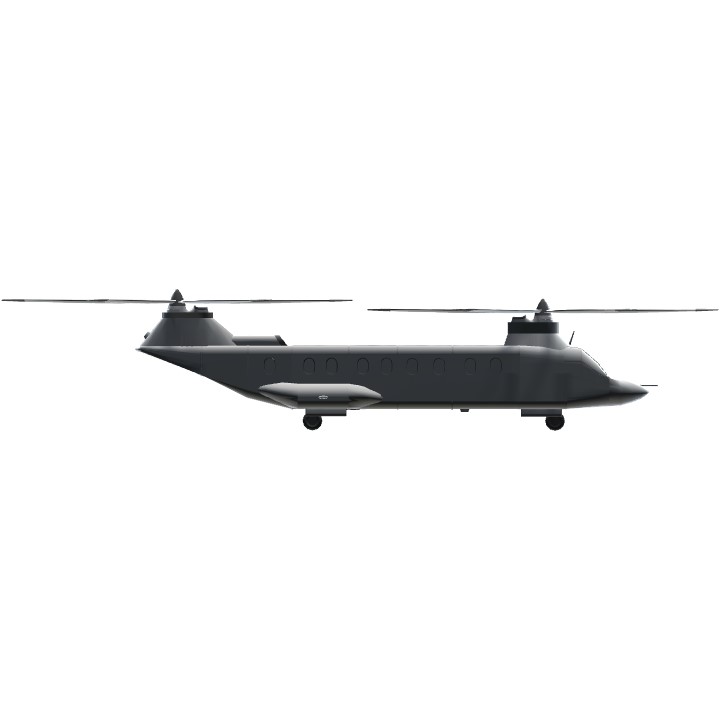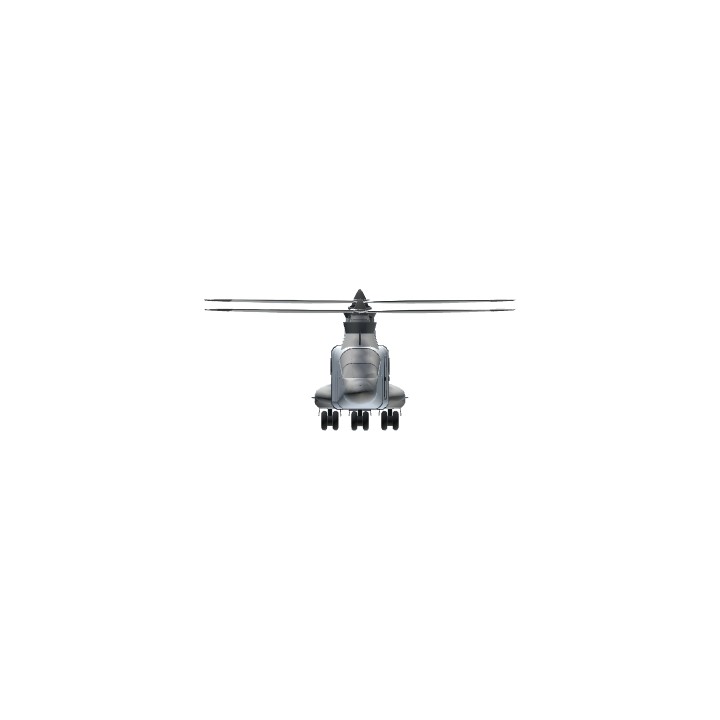








Derived from my previous War Horse I made this version with civil livery with a longer fuselage to make more proportioned and realistic the model, and several technical improvements.
The control system I have chosen is an evolution of what I have studied for my previous helicopter, the SNAW HGA 01 but compared to War Horse the handling has been improved a lot, even if for now I could not make a helicopter as maneuverable as mine best aircraft projects.
The improvements compared to the previous model concern the space between the rotors (which now no longer intersect) and the settings of the gyroscopes, which are more responsive to the maneuvers, the length - necessary to create the space for the rotors)
A number of aesthetic details have also been added, such as passenger and crew doors, antenna, pitot tube and a new graphic design for civil aviation.
I tested again counter rotating rotors, but it cause impredictable effect changing collective pitch like brief but brutal nose up or nose down movement (and I cant understand why) so I switched back to same rotation spin for both engines.
VTOL = Collective pitch of the rotors
High positive pitch, low negative pitch, useful to get off quickly from relatively high altitudes
TRIM = Angle of attack of the Rotors
At the top they lean forward and move forward, reverse the other way
THRUST = Engines rotation speed
8 = Lights
The three commands of engines and rotors require to be used with a certain balance. Maintaining a stable height is obtained mainly by varying the collective pitch or the angle of attack by compensating these with the rotation speed, bearing in mind that an excessive step compared to a too slow rotation speed causes a fall in the speed of the blades, and therefore in the thrust. Giving angle to attack the rotors causes a component forward, and the loss of the same component vertically, if you do not compensate with the gas or with the collective pitch is lost altitude.
As the altitude or the situation changes, the equilibrium can be achieved with engine revolutions slightly different from test to test, considering a variation of plus or minus 2% as a normal adjustment.
The other three axles are absolutely standard. For a tight turn: Roll and immediately pitch up without stopping to roll. Release the pitch up a little before stopping to roll. (This is for the best possible result)
In hovering, beating or cabrating causes a component forward or backward, and the latter can be used as a brake. Rolling briefly causes a side component, and you can strafe like a crab. To stop the movement, roll on the opposite side.
The rudder can be used both in hovering and in motion. For love of truth, can be used also with the helicopter parked... the gyro made it turn on place.
For a perfect takeoff from wright airport:
THRUST 29% (27% -30%) - Climb the TRIM slowly up to 50% on or first notch (The helicopter takes off gently and begins to rise vertically) - VTOL 60% up, ie shortly after the first notch (the rotors lean forward and the whole helicopter follows them, vertical thrust is lost and horizontal speed is acquired, until it stabilizes. Stabilizing the altitude may require adjustments between THRUST, TRIM and VTOL, but this is normal in the absence of an autopilot .
The helicopter is amphibious, and can land and take off also from the water.
NOT COMPATIBLE WITH THE AUTOPILOT
Specifications
General Characteristics
- Predecessor Double WIP
- Successors 2 airplane(s)
- Created On Windows
- Wingspan 22.6ft (6.9m)
- Length 52.2ft (15.9m)
- Height 10.3ft (3.1m)
- Empty Weight 1,965lbs (891kg)
- Loaded Weight 5,141lbs (2,332kg)
Performance
- Horse Power/Weight Ratio 0.777
- Wing Loading 101.9lbs/ft2 (497.5kg/m2)
- Wing Area 50.5ft2 (4.7m2)
- Drag Points 3826
Parts
- Number of Parts 142
- Control Surfaces 0
- Performance Cost 546

